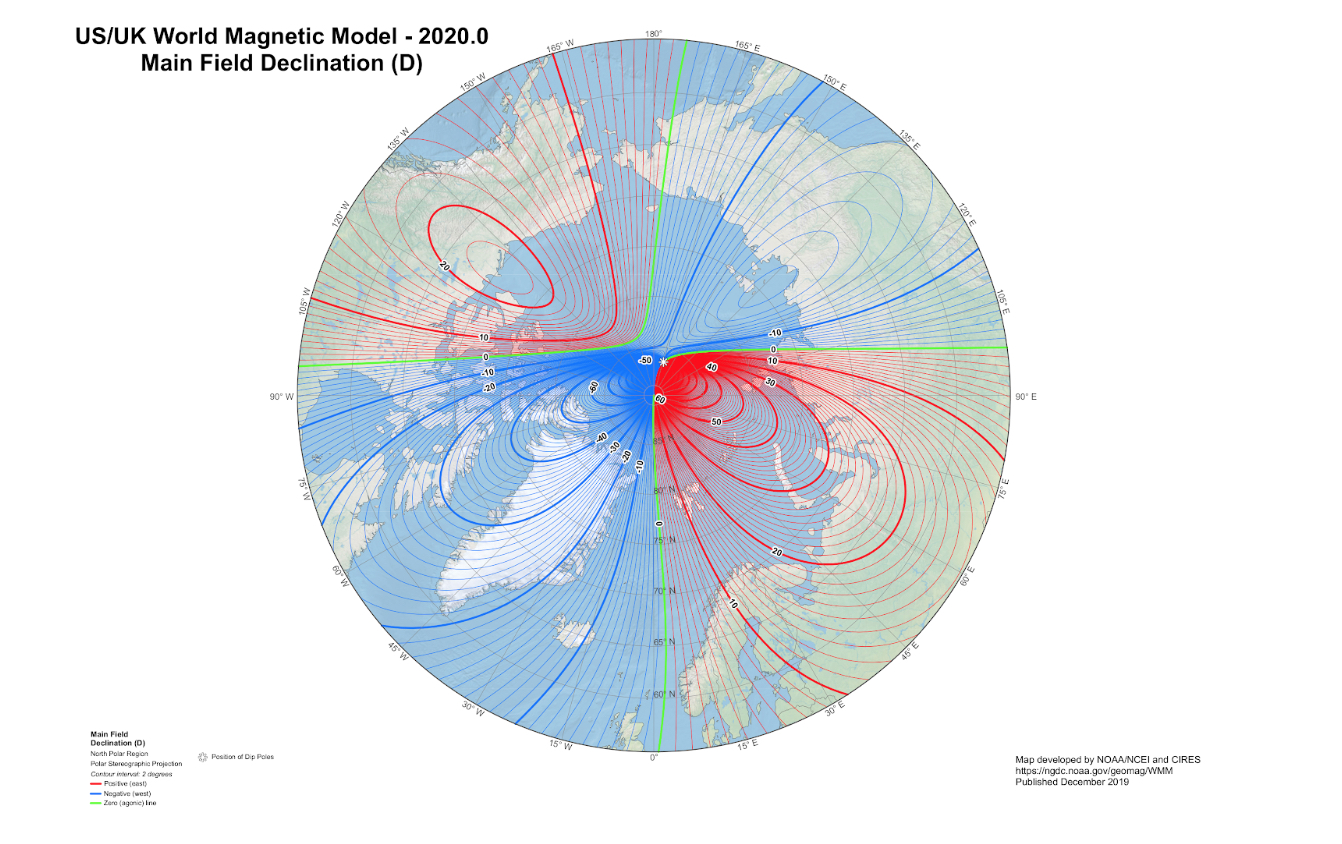The magnetic North Pole is still moving toward Russia, but has slowed its pace
The recently updated World Magnetic Model is expected to last for five years, despite an unusual update earlier this year.

Earlier this month, researchers released the latest version of the World Magnetic Model. They found that the magnetic North Pole is still moving eastward, toward Siberia, but the movement has slowed to about 24.8 miles per year.
Early in 2019, the model had to be updated sooner than anticipated because of the pole’s rapid movement east. The U.S. military requested the unprecedented early review when the drifting pole began affecting Arctic navigation.
The magnetic model is maintained by the National Oceanic and Atmospheric Administration and the British Geological Survey. It’s released every five years, and the researchers expect this version to last until 2025, despite the recent stopgap update. That update may have been prompted by a geomagnetic pulse under South America in 2016 that affected the Earth’s core and, subsequently, its magnetic field.
The model now includes “Blackout Zones” around the magnetic poles: a “Caution Zone” where compasses may become prone to errors, and an “Unreliable Zone” where compasses may become inaccurate.
The magnetic north pole not only guides compasses; everything from smartphone maps and GPS systems to military and aviation navigation also relies upon the magnetic north pole. It’s updated regularly in order to keep these system as in tune as possible with the pole’s location.
In addition to military uses like undersea and aircraft navigation and parachute deployment, federal agencies use the model for surveying and mapping, satellite and antenna tracking, and air traffic management.
The magnetic North and South Poles are naturally in flux, as the Earth’s core of molten liquid iron moves and forms the basis of our magnetic field.
Sometimes the poles drift so far, the magnetic fields reverse. This usually happens every couple of hundred thousand years or so, but it hasn’t happened for about 780,000 years — which means we could be due for a reversal. However, some geologic records show that previous flips of the magnetic north and south took place over the course of 22,000 years.
That means scientists may have some time to predict and work out the effects of a reversal. But for now, they’re not too worried by this movement toward the Russian Arctic.
“The location of the north magnetic pole appears to be governed by two large-scale patches of magnetic field, one beneath Canada and one beneath Siberia,” Phil Livermore, a geomagnetist at the University of Leeds, told Nature. “The Siberian patch is winning the competition.”
From its formal discovery in 1831, the magnetic pole has traveled about 1,400 miles total. In the 1990s, it picked up steam, moving from about 9 miles every year to 34 miles per year last year. But now the pace is more moderate, at around 24.8 miles a year.
For Northern Lights watchers, this should be no cause for alarm. Recent research reveals the aurora borealis is likely not moving with the magnetic poles. Instead, it track with the third kind of North Pole: the North Geomagnetic Pole, a “kind of reliable, averaged-out version of the magnetic poles, which move erratically all the time,” as Nathan Case, a senior research associate in space and planetary physics at Lancaster University, puts it. This pole isn’t moving nearly as quickly.
So, although the meandering magnetic pole may cause mayhem for navigators and researchers, the lights should stay in place — for now, at least.